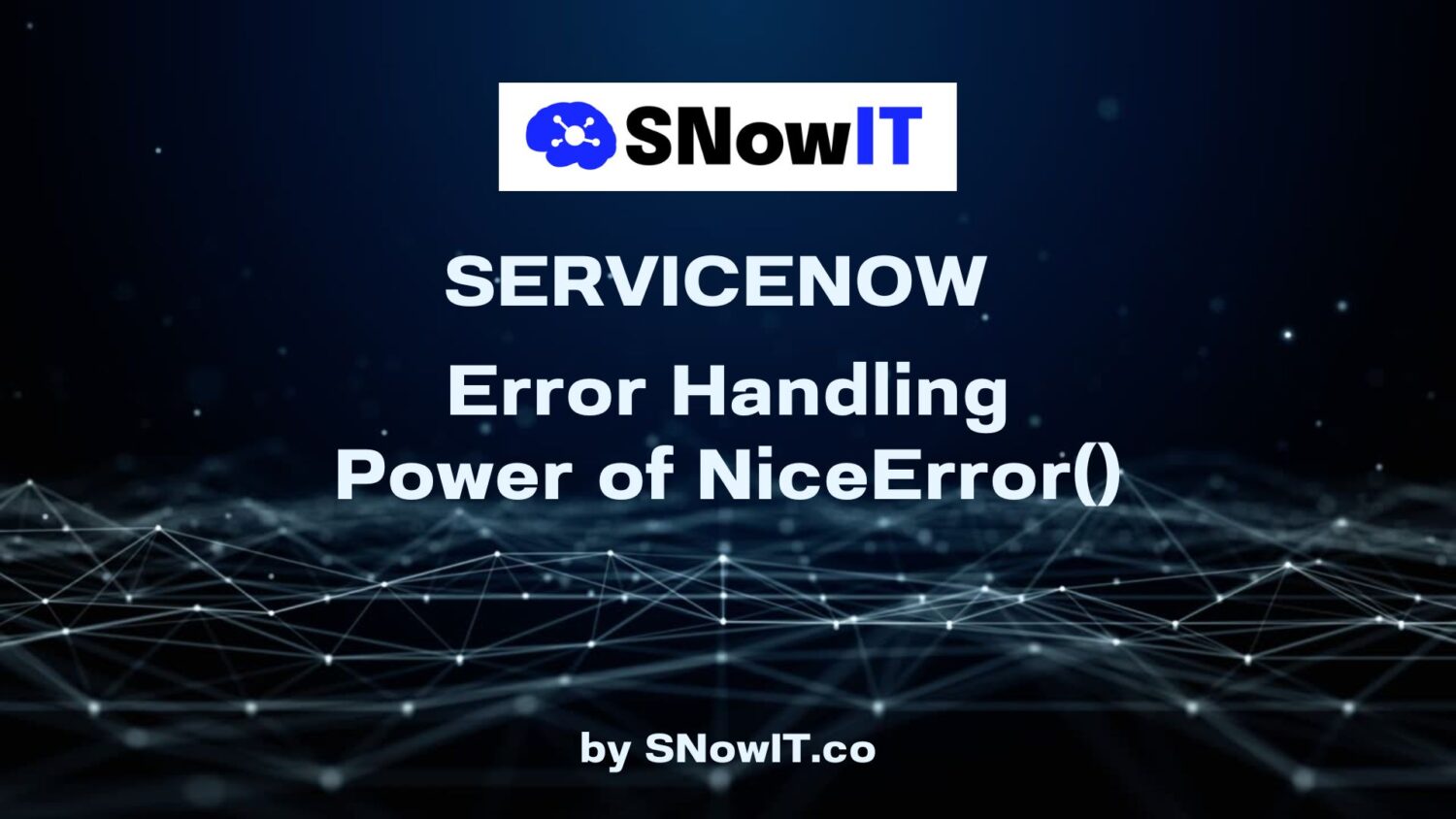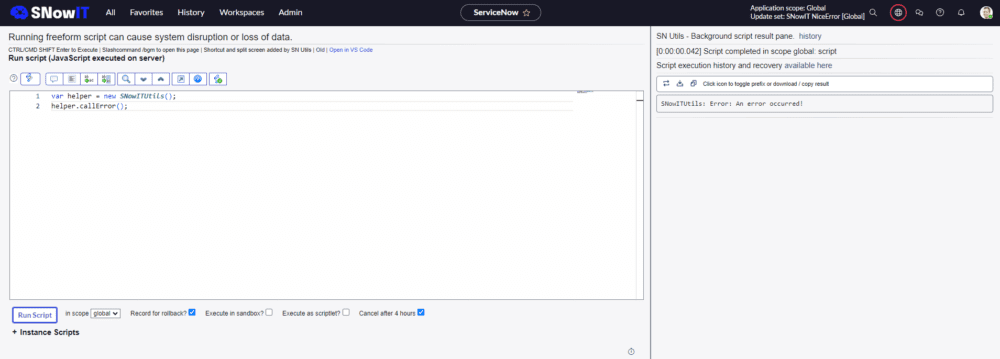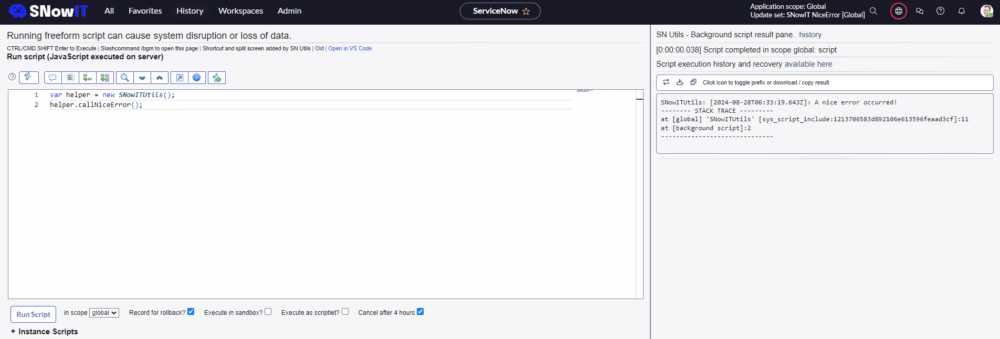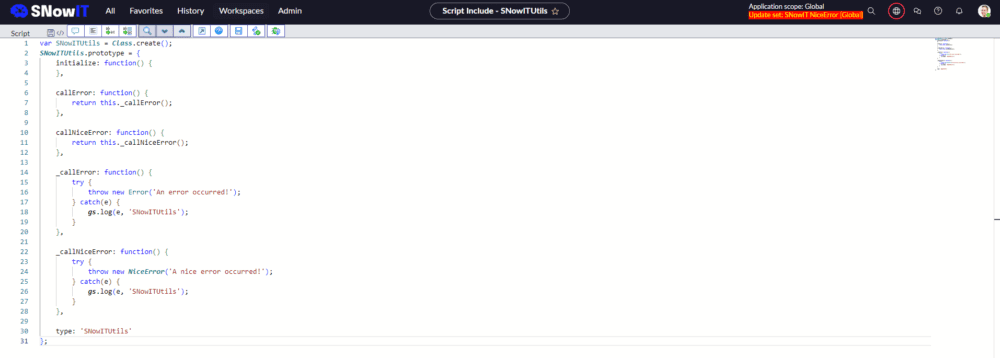Enhancing Error Handling in ServiceNow: The Power of NiceError()

Introduction
In the ever-evolving world of IT service management, ServiceNow continues to innovate and provide developers with powerful tools to enhance system performance and reliability. One of the critical aspects of robust application development is effective error handling. Traditionally, ServiceNow developers have relied on the Error() function to capture and display error messages. However, with the introduction of NiceError(), there’s a new, more informative way to handle errors that offers deeper insights into application issues. In this post, we will explore the transition from Error() to NiceError() and discuss how this change can improve your debugging and troubleshooting processes.
Why Error Handling Matters
Error handling is a fundamental aspect of software development. It ensures that applications can gracefully handle unexpected situations, provide useful feedback, and maintain stability. Effective error handling helps developers identify the root cause of issues quickly, minimizing downtime and improving user experience. In complex platforms like ServiceNow, where multiple processes and integrations are in play, having robust error handling mechanisms is essential to maintain the integrity and reliability of the system.
The Limitations of Error()
The traditional Error() function in ServiceNow has been a staple for logging error messages. While it serves its purpose by alerting developers to issues, it falls short in providing the full context needed to understand and resolve the problem efficiently. Typically, Error() will log a basic error message, which might look something like this:

The output, in this case, is just the error message “An error occurred!” without any additional information about where or why the error happened. This lack of detail can make troubleshooting more challenging, especially in complex scripts or workflows.
Introducing NiceError()
Enter NiceError(), a new error handling method in ServiceNow that enhances the traditional error logging by providing more detailed information about the error. Unlike Error(), NiceError() offers a track of the execution, including stack traces and function calls. This additional context is invaluable when debugging, as it helps developers quickly pinpoint the source of the issue.

The output from NiceError() includes not only the error message but also a stack trace, providing a clearer picture of the error’s context. This makes NiceError() a powerful tool for developers, enabling more efficient debugging and faster issue resolution.
Why Switch to NiceError()?
Switching to NiceError() offers several significant benefits:
- Enhanced Debugging: By providing a complete execution trace,
NiceError()makes it easier to understand the sequence of events leading up to the error. This can be especially helpful in complex scripts where multiple functions and processes are involved. - Improved Maintenance: Detailed error information enables faster troubleshooting, reducing the time it takes to identify and fix issues. This leads to a more stable application and a better overall user experience.
- Scalability: As your application grows and becomes more complex, having robust error tracking becomes crucial.
NiceError()scales well with your application’s needs, providing the detailed information necessary to maintain control.
Getting Started with NiceError()
Implementing NiceError() in your ServiceNow instance is straightforward. Here are the steps to get started:
- Identify Critical Error Points: Review your existing scripts and workflows to identify where errors commonly occur. These are prime candidates for using
NiceError(). - Replace
Error()withNiceError(): In your identified scripts, replace instances ofError()withNiceError(). This involves adjusting the catch blocks to handle and log the additional context provided byNiceError(). - Log and Monitor Errors: Use ServiceNow’s logging capabilities to capture and store the detailed error information provided by
NiceError(). Regularly monitor these logs to identify and address issues proactively. - Train Your Team: Ensure that your development and support teams are familiar with
NiceError()and understand how to interpret the additional information it provides. This will help them troubleshoot issues more effectively.

Best Practices for Using NiceError()
To get the most out of NiceError(), consider the following best practices:
- Log Meaningful Messages: Make sure your error messages are descriptive and provide context. This will make it easier to understand what went wrong and why.
- Avoid Overuse: While
NiceError()is powerful, avoid using it excessively, as this can clutter your logs and make it harder to find relevant information. Use it strategically where detailed tracking is most needed. - Combine with Other Debugging Tools: Use
NiceError()in conjunction with other ServiceNow debugging tools to gain a comprehensive understanding of application issues.
Conclusion
Effective error handling is critical for maintaining the stability and reliability of your ServiceNow applications. By transitioning from the traditional Error() function to the more informative NiceError(), you can gain deeper insights into application issues, enabling faster and more efficient troubleshooting. Start using NiceError() today to enhance your error handling and ensure your applications run smoothly.
Call to Action
Ready to take your error handling to the next level? Start using NiceError() in your ServiceNow scripts and experience the benefits of enhanced error tracking and debugging. Have you already used NiceError()? Don’t forget to subscribe to our Youtube’s channel for more ServiceNow tips and updates.

